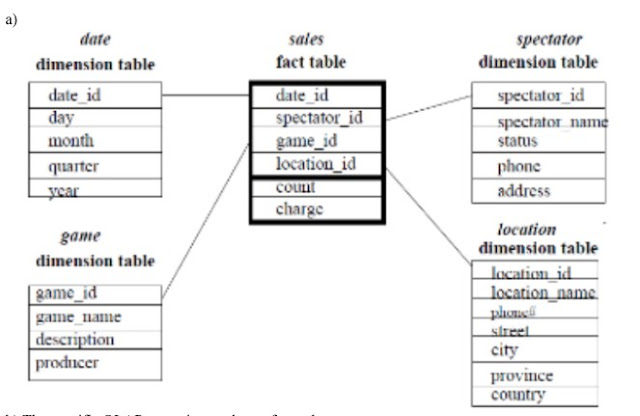Short note on Fact Constellations Schema.
Fact Constellations Schema
- This kind of schema can be viewed as a collection of stars, and hence is called a galaxy schema or a fact constellation.
- A fact constellation schema allows dimension tables to be shared between fact tables.
- For example, the following schema specifies two fact tables, sales, and shipping.
- The sales table definition is identical to that of the star schema.
- The shipping table has five dimensions or keys: item key, time key, shipper key, from location, and to location, and two measures: dollars cost and units shipped.
Defining a Fact Constellation in DMQL
define cube sales [time, item, branch, location]:
dollars_sold = sum(sales_in_dollars), avg_sales = avg(sales_in_dollars), units_sold = count(*)
define dimension time as (time_key, day, day_of_week, month, quarter, year)
define dimension item as (item_key, item_name, brand, type, supplier_type)
define dimension branch as (branch_key, branch_name, branch_type)
define dimension location as (location_key, street, city, province_or_state, country)
define cube shipping [time, item, shipper, from_location, to_location]:
dollar_cost = sum(cost_in_dollars), unit_shipped = count(*)
define dimension time as time in cube sales
define dimension item as item in cube sales
define dimension shipper as (shipper_key, shipper_name, location as location in cube sales, shipper_type)
define dimension from_location as location in cube sales
define dimension to_location as location in cube sales
OR,





Comments
Post a Comment